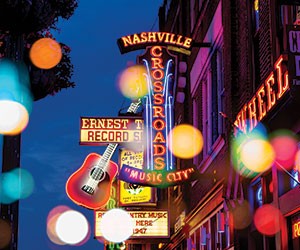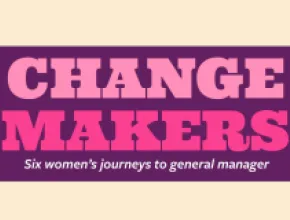As air travel steadily becomes more challenging, driving on an interstate highway listening to your favorite tunes or an audiobook on the way to a meeting is a bit more enticing these days.
Long waits in airport security lines, annoying luggage cost add-ons and frequently delayed flights are some of the reasons attendees consider driving a viable alternative to flying.
Drive-to meetings are increasingly a desired choice, especially for associations, local businesses and regional companies seeking transportation cost savings and convenience.
Veteran planners and hotel executives, who have executed numerous drive-to meetings and events, know that success is only accomplished through superb planning and a full understanding of the concept.
Attractive Attributes
“The biggest attraction of a drive-to is the obvious cost savings from eliminating air,” says Mike May, president of Spear One, a Dallas-based meeting and incentive company. “A second attribute is it allows more people to attend, such as the corporate office staff working nearby.”
For multiday meetings, the possibility of being accompanied by family members is also appealing.
“The flexibility of driving and avoiding expensive airfares makes a drive-to a realistic option to bring your family,” says Carissa Smith, director of sales and marketing for Omni Barton Creek Resort in Austin, Texas. “We definitely see lots more family members on drive-to meetings during the summer, spring break and the holidays, when the kids are out of school.”
Local businesses like drive-to meetings because of the convenience and possibility of saving on overnight accommodations.
“Drive-to meetings are particularly attractive when a group can get in and out within the time frame of one day,” says Terry Matthews-Lombardo, CMP, president of TML Services, a meeting and event planning company based in Orlando. “Short, one-day or half-day meetings make the drive-to option more appealing.”
Driving Downside
As it turns out, drive-to meetings aren’t for everybody.
“Invitees feel a lower level of personal commitment without an airline reservation and they tend to arrive later and leave earlier when driving,” May says. “Generally speaking, there’s also a higher percentage of no-shows at drive-to meetings.
PageBreak
“Because labor costs or lost productivity during drive times are often overlooked, drive-to meetings don’t always save what was initially estimated,” May adds.
Driving in bad weather and the possibility of accidents or attendees getting lost and arriving late for important meetings or events are other considerations that might put a damper on a drive-to program.
Destination Deliberation
“There’s a limit to how far people prefer to drive as opposed to the shortened distance and time frame that air travel allows,” Matthews-Lombardo says. “Usually that limit is several hours or a couple hundred miles.
“In my experience, if it goes beyond those loose boundaries, people still prefer to hop a plane if the budget is there for it,” she continues.
May believes the distance to the venue depends on the group’s needs and wants.
“We have a restaurant client who asks managers to drive to their annual conference if they live within 500 miles,” he says. “While that seems like a great distance at first glance, the managers enjoy driving because the conference occurs during the summer in Sunbelt destinations like Nashville, New Orleans or Branson, and they can bring their families for a summer getaway.”
David Carr, director of sales at Tourism Santa Fe (N.M.), says his city embodies all of the elements needed to be an enviable drive-to destination.
“We have lots of public and hotel parking, a walkable downtown area and a wealth of cultural attractions and outdoor activities,” Carr says. “Some of our groups drive in from as far away as Dallas, which is about 10 hours, and Oklahoma City, a nine-hour drive.”
When attendees are excited about a destination, hotel or resort, they’re generally going to have a better attitude toward a drive-to.
“Many attendees like the convenience of driving, but it’s very important to select a desirable destination, which can boost attendance and enthusiasm at the meeting or event,” May says.
Parking Priority
In real estate, the popular bromide is “location, location, location.” With a drive-to meeting or event, it’s “parking, parking, parking.” Matthews-Lombardo says she definitely learned the hard way about the importance of parking logistics.
“Early in my career, I was managing a regional chapter meeting for a national association and midway through the on-site check-in and registration process the attendees started complaining that the hotel had no parking spaces left,” she explains. “I neglected to arrange garage reservations and didn’t ask for a conference discount.
PageBreak
“It seemed impossible that a hotel of that size would not have enough parking spaces,” she continues. “The problem was there was a perfect storm between my group and another association that was also driving in, and the other group started before mine and got all the spots.”
Matthews-Lombardo suggests making a good estimate of your drive-in attendee number and work closely with the hotel to ensure your group’s parking needs will be met.
“Make sure you have plenty of parking spots reserved or available at your host venue, preferably clearly marked and with an assigned attendant,” she says. “While it seems like a no-brainer to negotiate parking rates, if you’ve never needed to do this before it can easily be overlooked.”
Negotiating parking fees or finding properties with no parking charges goes a long way toward staying on budget and making the drive-to enjoyable for attendees.
“We have a substantial drive-to business and one of our appeals is easy, convenient parking with no charges,” says Drew Toth, director of sales and marketing for Mission Inn Resort & Club near Orlando, which has two 18-hole golf courses and activities like a teambuilding course, trap- and skeet-shooting range and guided fishing trips.
Important Issues
Interestingly, when there’s an option between air travel or driving, attendees sometimes choose to fly even if it’s a bit more of an annoyance.
“Some people will choose to fly for the mileage benefits, especially if the company is paying for the ticket,” Matthews-Lombardo remarks.
Other attendees who are part of a golf-oriented meeting and are typically enamored with flying might opt for the convenience of traveling by car.
“They can easily load their golf bag in the trunk and avoid all the hassles and charges associated with flying,” says Tony Davis, chief executive officer for PCH Hotels & Resorts, which oversees eight meeting-oriented hotels in the Robert Trent Jones (RJT) Golf Trail Resort Collection in Alabama. “The RTJ Golf Trail is a very popular drive-to destination for state associations, regional corporate groups and fraternal organizations.”
For environmentally conscious planners, promoting carpooling is a great way to incorporate a green initiative into the program as well as save money on gas.
Accidents happen, and it’s important to check on legal and insurance ramifications with a lawyer, especially if staff vehicles are being utilized for transport. Attendees should also be provided with a key main contact, in case something goes wrong en route to the destination.






